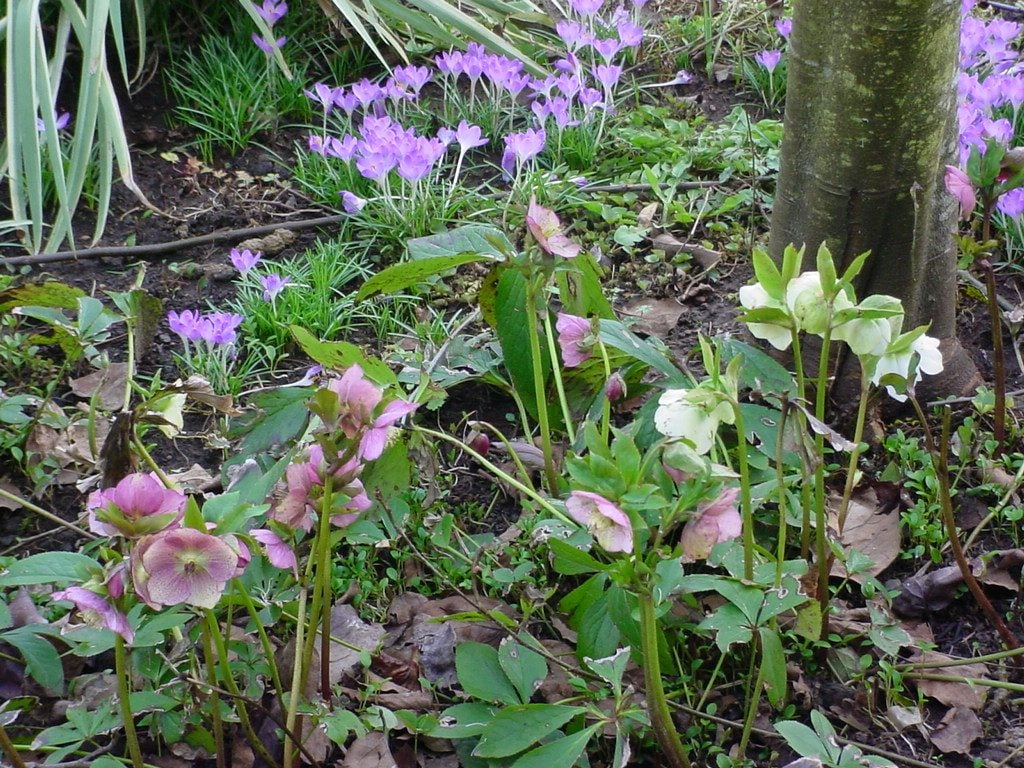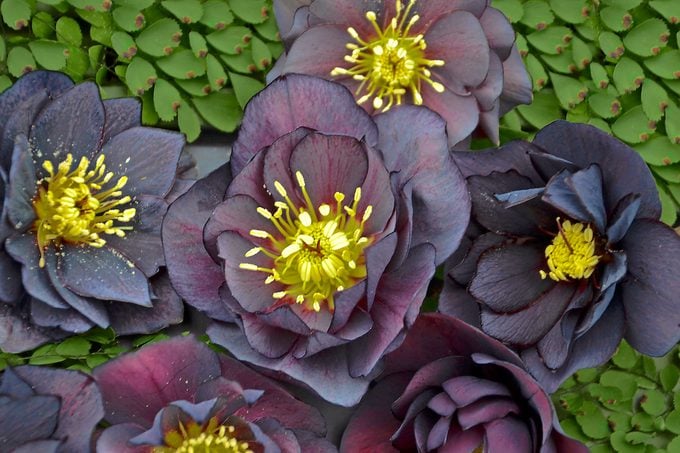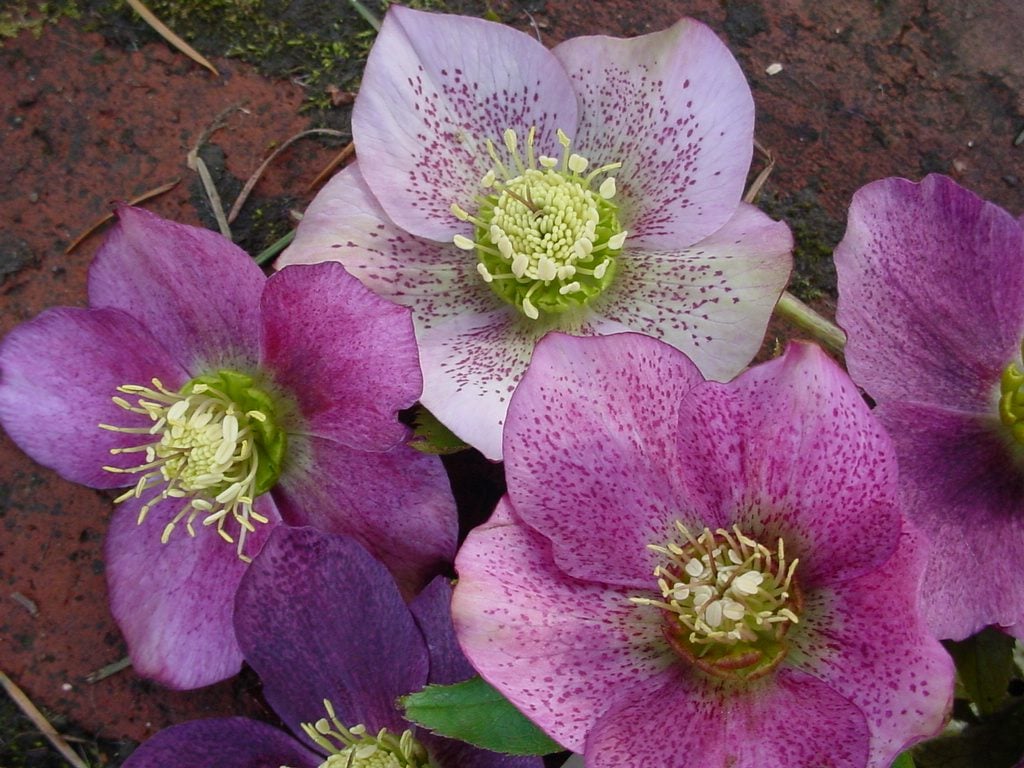Plant Hellebore (Lenten Rose) for Early Spring Blooms
Updated: Feb. 13, 2024
Learn to care for Lenten rose, also known as hellebore. These early blooming flowers add beauty to your garden even before spring arrives.
There is nothing that captures the heart more than a plant with a long history behind it. The Lenten rose or hellebore is one of those plants. During the season of Lent, take some time to check out this wonderful group of plants and find one for your garden.
On This Page
Lenten Rose Care and Growing Tips

- Common name: Lenten rose
- Scientific name: Helleborus orientalis or H. × hybridus
- Zones: 4 to 9
- Attracts: Bees
- Light needs: Part to full shade
- Size: Plants reach up to 1 1/2 feet tall and wide
- Grown for: Cold season interest and early color
- Foliage: Glossy dark leaves
- Cultivars to try: Choose one of the many hybrids, such as Onyx Odyssey with purple, almost black, double flowers, or Phoebe with lovely pink spotted blooms
Hellebores are among the earliest perennial bloomers. Cup-shaped flowers sprout from robust evergreen foliage in moderate winter climates, and range from white or pink to rosy purple, and anywhere between. The long bloom period begins in February, March or April, and flowers tolerate late-season snow well.
This sweet, simple-care favorite is perfect for shadier spaces in your garden. Hellebore enjoys bright shade, like on the edge of a woodland, but can also be grown in the garden on the east side of a house where it is protected from hot afternoon sun.
These perennials enjoy a woodland type soil, though being tough plants, they will do fine in average garden soil with some added compost and good drainage.
Hellebore is poisonous, so deer are not going to graze on it. However, it’s a good idea to wear gloves if your skin is sensitive as it can cause some dermatitis.
Check out more early blooming spring flowers for your garden.
Pollinator Benefits
These wonders bloom as early as late winter and provide several months of food for spring bees, hoverflies and other pollinators.
Check out the top 10 early spring flowering bushes.
History of Lenten Rose

This plant is not actually a rose at all, but is part of the Runuculacea family of plants. The recorded history of hellebore dates back centuries when it was used in witchcraft and medicinally and later when it became known by the common name “Lenten rose” because of its habit of blooming during the season of Lent. This helped make them a favorite in Victorian gardens over 100 years ago.
Another interesting bit is that some historians think it was actually the poison of hellebore that killed Alexander the Great.
Check out these fascinating primrose flower facts.
When Does Lenten Rose Bloom?

Lenten rose is a hardy perennial with evergreen leaves and long lasting blossoms. It can begin to bloom in late January or February in the more temperate zones or about March or April in colder zones. The blooms last a couple of months, a rare thing in any garden plant to be sure.
The blooms also make good cut flowers. They are best displayed by floating them in a dish of water in the center of the table or even in the bird bath. If you want to cut them be sure you chose blooms that have been open a while and feel leathery so they last well after they are cut.
Cutting Back Lenten Rose
Once established, this perennial is drought tolerant. The only grooming needed is to clip off last season’s leaves in early January. It’s important to clip the old leaves before the blooms begin to emerge so you don’t accidentally snip those off in the process.
Old leaves sometimes get a bit of spotting from blight in areas with more rainfall. Remove and dispose of these portions.
Grow winter daphne shrubs for early, fragrant blooms.
Growing Lenten Rose From Seed

These plants produce a lot of seed, though they are not weedy. Over time, hellebore will colonize an area. The seeds are a good size and black when ripe making them easy to collect.
The beauty of them producing seed like they do is that you can grow more plants for your garden or share them with friends. They are not an inexpensive plant at the nursery so its great way to save money, too. The diversity of bloom color is one of the best reasons for growing out some of the seeds.
If you want to start some plants from seed you can just scatter the seed in an area you want it to grow in and let nature take its course. It’s really that easy!
How to Divide Hellebores
Hellebores form a nice clump and are easily divided to make more plants. The rule of thumb is that this should be done by April or wait until fall. Be sure you dig deeply and stay out away from the edges of the leaves a bit so you get as much of the root ball as possible.
Next, check out our favorite winter interest plants to add color and beauty to your yard.
Why Trust Us
For nearly 30 years, Birds & Blooms, a Trusted Media Brand, has been inspiring readers to have a lifelong love of birding, gardening and nature. We are the #1 bird and garden magazine in North America and a trusted online resource for over 15 million outdoor enthusiasts annually. Our library of thousands of informative articles and how-tos has been written by trusted journalists and fact-checked by bird and garden experts for accuracy. In addition to our staff of experienced gardeners and bird-watchers, we hire individuals who have years of education and hands-on experience with birding, bird feeding, gardening, butterflies, bugs and more. Learn more about Birds & Blooms, our field editor program, and our submission guidelines.




















